Key in a search term below to search our website.
Key in a search term below to search our website.
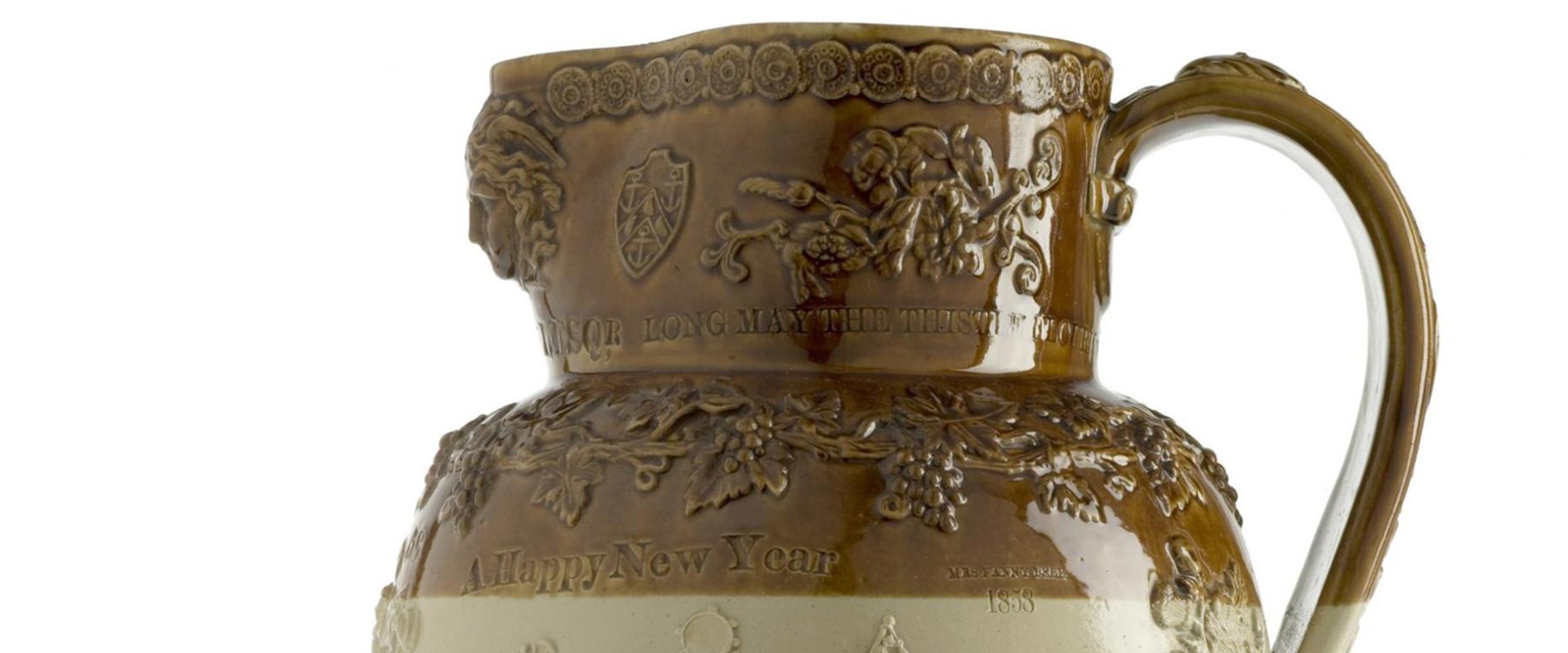
The jug is a rare example of elaborately decorated brown stoneware. It is decorated with Scottish motifs and phrases, including the Royal Arms of Scotland.
Date
1858
Made by
Newbigging Pottery
Made from
Stoneware
Made in
Scotland
Museum reference
On display
Scottish Pottery: Art and Innovation, Exhibition Gallery 4, Grand Gallery at the National Museum of Scotland until 25 June 2017.
Did you know?
This jug was made for James Bell, a local solicitor who was also an investor in the pottery.
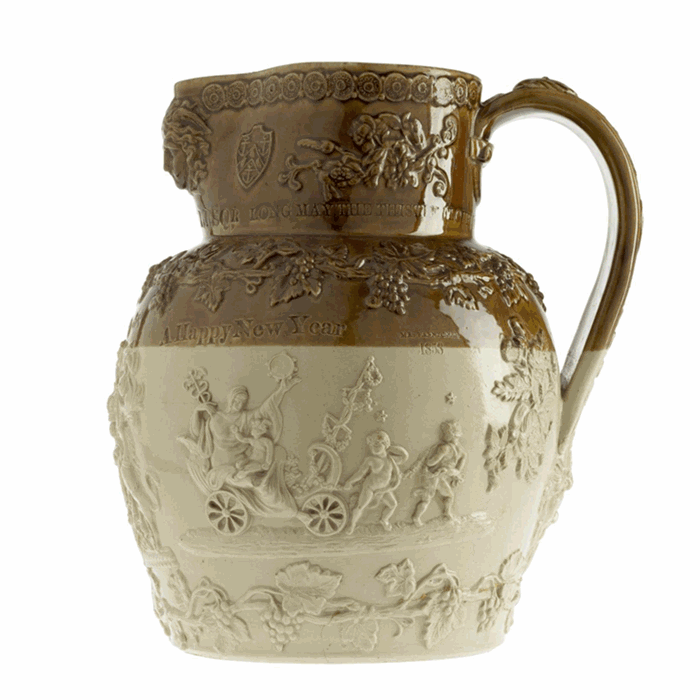
This jug was never marked by the pottery that produced it, so understanding its history requires a bit of detective work. Stoneware is a robust material which was widely used for everyday items such as jars and bottles, and was also used for larger practical pieces such as water filters. The method used to decorate this piece is a technique known as 'sprigging' where the decoration was applied to the jug, after having been moulded separately.
The images depicted on this jug and accompanying phrases immediately indicate that this is likely to be a Scottish piece, or at the very least made for a Scottish individual. It was probably made as a one off showpiece gifted to an individual, as this jug was not something that was mass produced.
“The personal nature of the inscriptions and motifs that it bears help to piece together the story behind it.- Adrienne Hynes, Assistant Curator, Scottish History and Archaeology
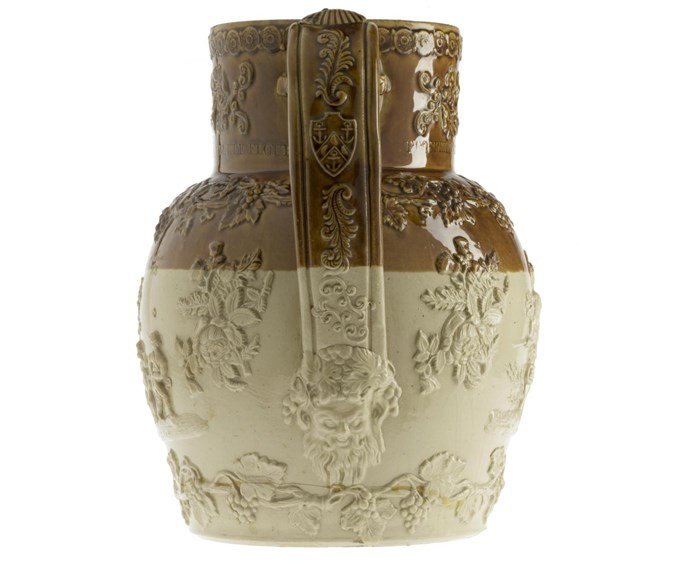
The central motif depicts the Royal Arms of Scotland and the inscriptions on the neck read 'Prosperity to Scotland' and 'Long may the thistle flourish'. The incorporation of the Musselburgh town crest on the handle and rim of the jug connects the piece to the Newbigging pottery which operated in the town. The pottery occasionally used the crest on the pieces it produced and in the absence of a makers mark, it is a starting point for identifying the source of the jug.
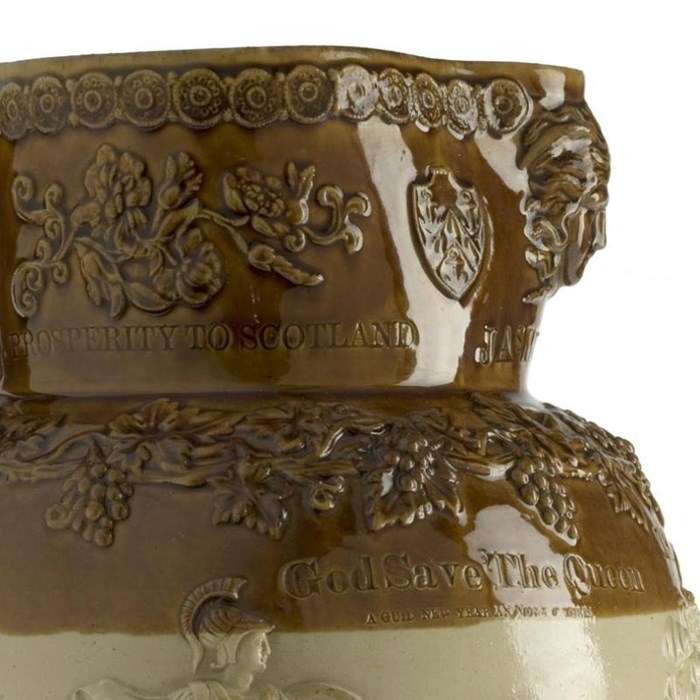
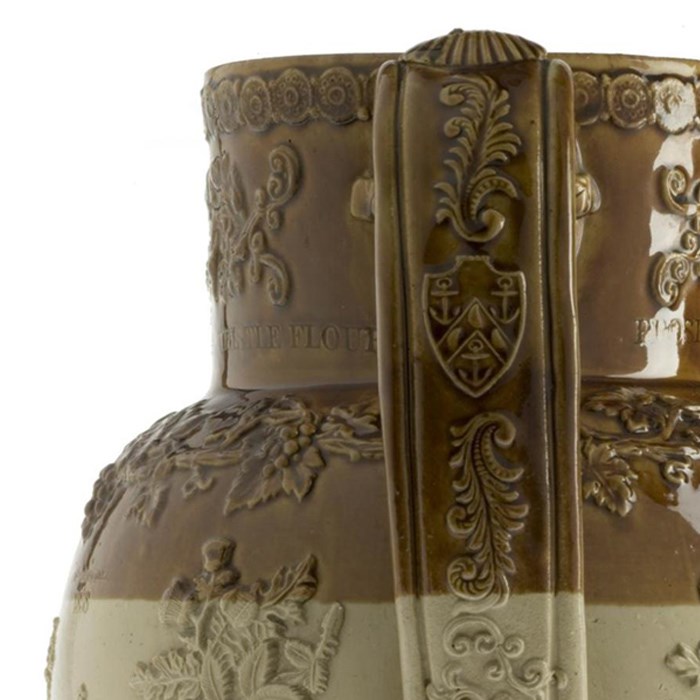
The Scottish pottery industry was driven by business owners who took innovative approaches to producing ceramics. New techniques and designs were developed by rival businesses with an element of secrecy. As the pottery industry was fiercely competitive, Scottish potteries were frequently declared bankrupt and Newbigging Pottery is one such example. The pottery changed hands many times throughout the course of its existence and new partnerships of owners and investors became involved.
Newbigging Pottery was first established in 1801 by William Reid, a potter originally from Bo'ness. After William's death in 1835 the business was continued by his sons and second wife. It was advertised to let in 1838 and again in 1850, although the advertisements indicate that it was still operated under the name of M. Reid & Sons. By 1857 the pottery had ceased to operate and was leased to A. & J. Winkles, the date of 1858 marked on the jug places it in this era of pottery production.
The names James and Fanny Bell accompanied by the phrase 'Happy New Year' add a personal touch to the jug. In the absence of any other manufacturing information, the names are vitally important in understanding the jug's history. Parish records show that James Bell was a Supreme Court solicitor who married Fanny Chapman in 1848 in Leith.
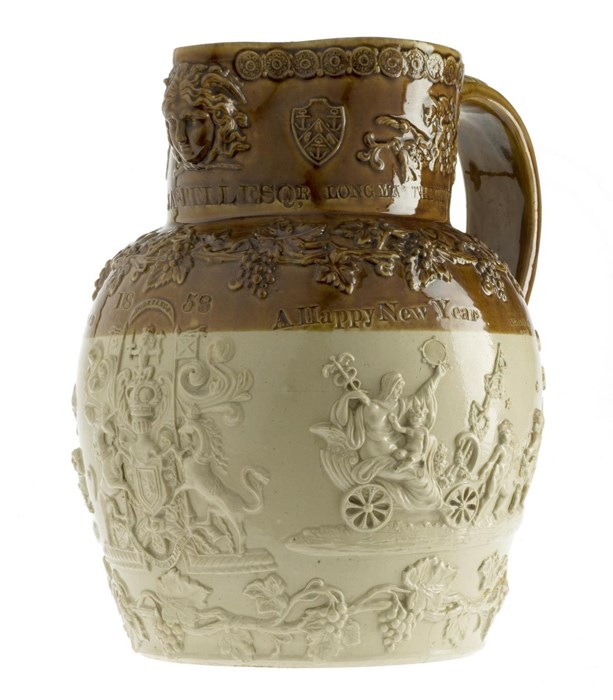
James and Fanny's connection to Newbigging Pottery is documented in an article in The Daily Scotsman. The article covers the examination of Andrew Winkles, partner of the firm A. & J. Winkles in the Edinburgh Bankruptcy Court in 1859, a year after the jug was made. During his examination in court, Andrew Winkles gave a full account of his lease for both the North British Colour Works pottery in Leith and the Newbigging Pottery in Musselburgh. The main investor for both of these enterprises was the solicitor Mr James Bell S.S.C. When questioned on the founding of his business Winkles stated:
“I had no capital when I came to Leith. I had become acquainted with Mr James Bell, S.S.C, in 1856, in course of law proceedings arising out of dispute with another party. After resolving to commence business and finding there was a place vacant that I could get, I asked Mr Bell to advance me some money.- Andrew Winkles in the Edinburgh Bankruptcy Court in 1859
Winkles went on to say that he entered into a partnership with his son Joseph and that Mr Bell had invested a large sum of money (around £2000) in order to get the pottery at Leith back into working order. Winkles stated that he had only been able to repay Bell around £600, however, a year later he went on to lease Newbigging Pottery in addition to the works in Leith.
“In 1857 I took a lease of another pottery at Newbigging, Musselburgh. I manufactured stoneware at both the potteries. Mr Bell gave me the money to pay the rent at Newbigging Colliery'- Andrew Winkles in the Edinburgh Bankruptcy Court in 1859
It is clear from the article that the A. & J. Winkles potteries had not been a particularly successful enterprise, despite the production of such a fine piece of Scottish stoneware as this jug. Winkles stipulated that there were no profits and when asked what he lived upon he quipped, 'The loss apparently'. According to the remainder of the proceedings Winkles was £3000 in debt when the pottery finally closed.
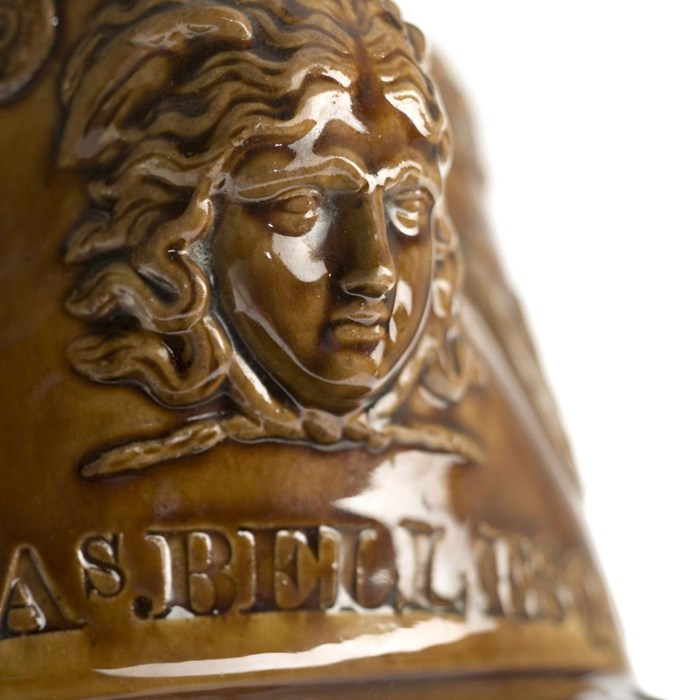
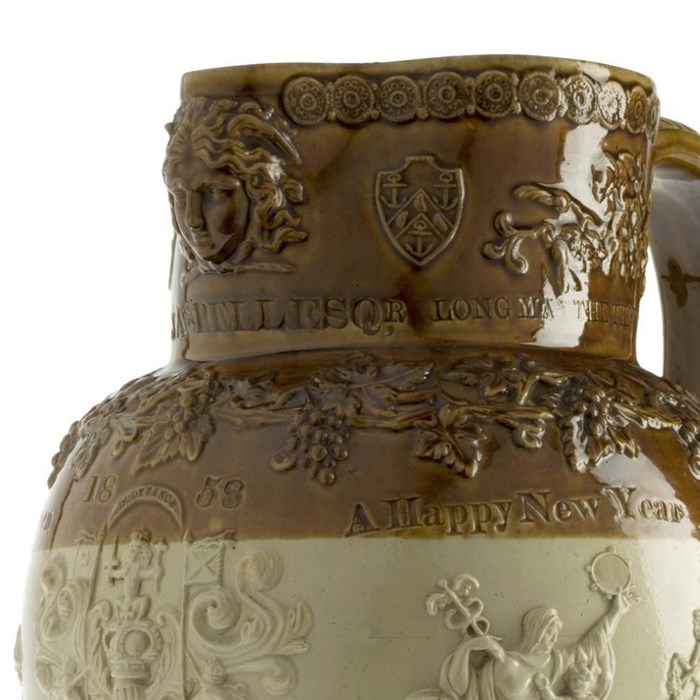
This important source therefore tells us that James Bell provided the capital behind both the Leith and Musselburgh potteries. It also confirms that Newbigging Pottery was indeed producing stoneware between 1857 and 1859, the period when the jug was made. Identifying James Bell as such an important investor for the pottery gives a clear reason why this impressive jug was made for him and his wife. Finally the jug also represents the complex nature of business relationships within the pottery industry.